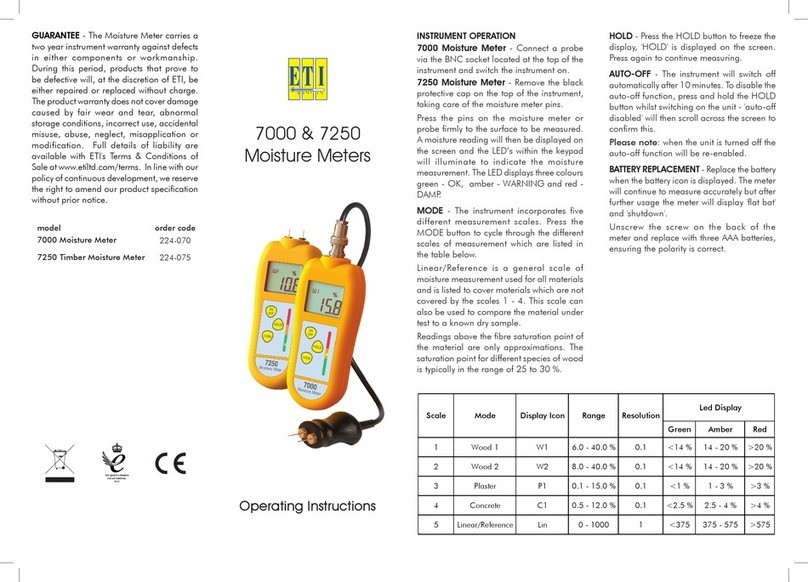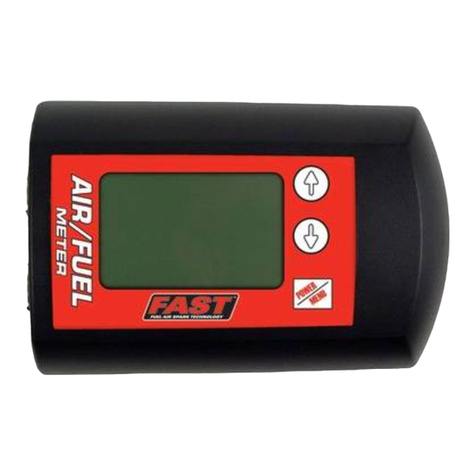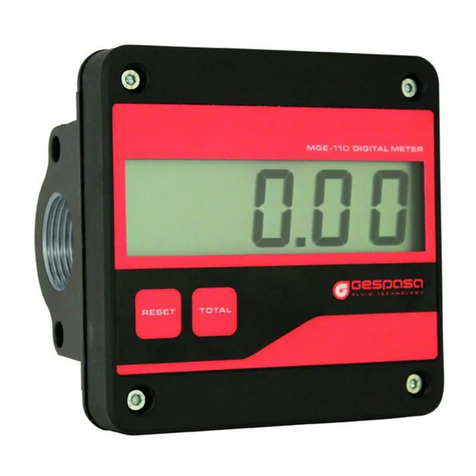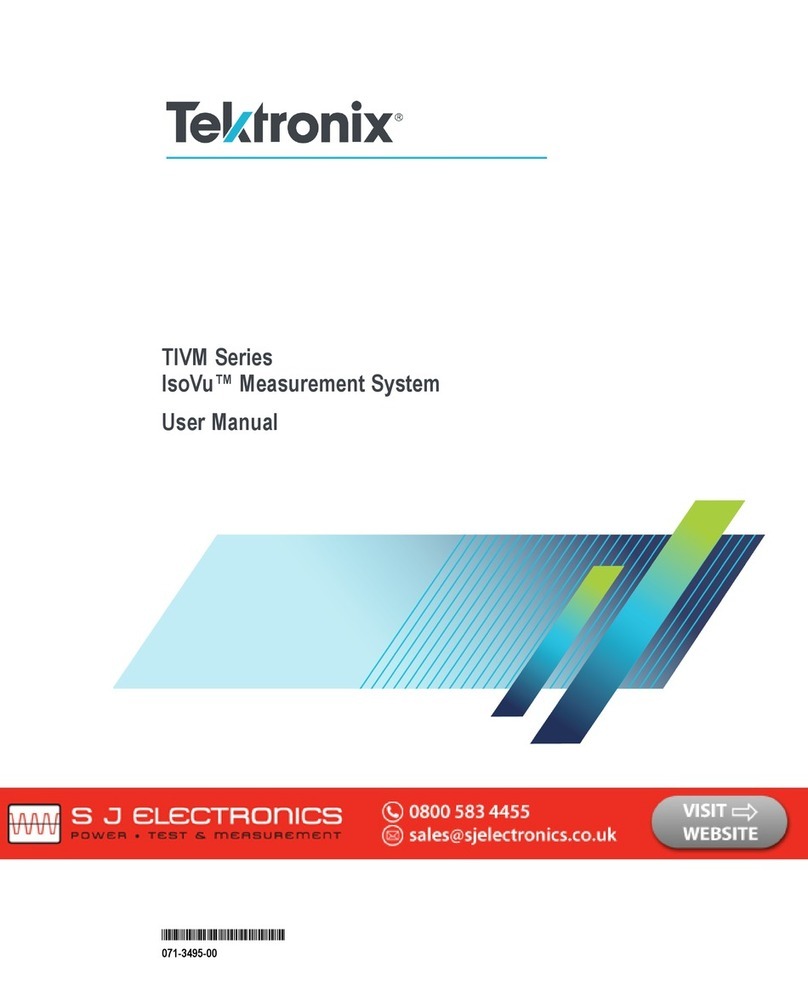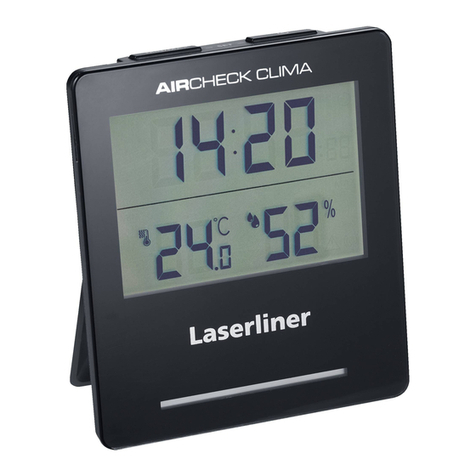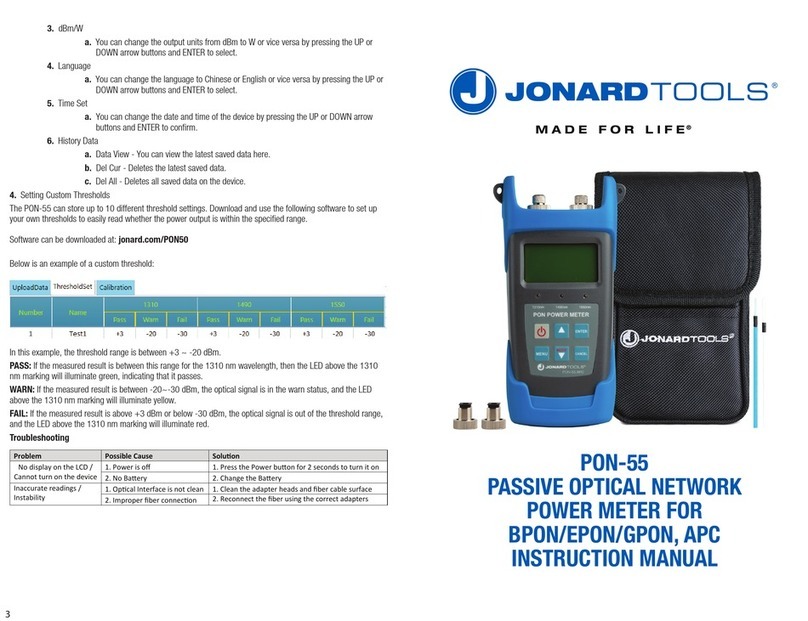Grand Seiko GL-7000 User manual

RB-501-B02A
Operations Manual
<Important>
Read this manual thoroughly before use.
Keep this manual on hand at all times.

RB-501-B02A
INTRODUCTION
This manual provides you information on correct handling and operational procedures as well as safety
considerations pertinent to the GL-7000.
Before carrying out any measurements, read the instructions thoroughly so that effective operation is
ensured. As this continues an important reference and user guide, be sure to keep it on hand at all times.
NOTE
(1) The information contained in this manual is subject to change without notice.
(2) While reasonable efforts have been made in the preparation of this document to ensure its accuracy,
you should contact your local distributor immediately, if any queries arise due to editorial errors or
omissions etc.
(3) If you find any imperfect collating or missing pages, contact your local distributor for replacement.
General definitions of safety symbols are indicated below.
Personal injury or physical damage may occur when this warning is
ignored.
General warning. Caution. Risk of danger.
General mandatory action.

RB-501-B02A
SAFETY CONSIDERATION
nGL-7000 is NOT a medical device.
nFingerprints or dust on the optical parts such as lenses may affect the measurement accuracy. Always
avoid touching such parts with fingers and keep away from dust getting on them.
nWhen fingerprints or dust are attached onto such parts, gently wipe them with the supplied dust cloth.
nWhen water or any liquid gets on the instrument, or
when any foreign matters gets inside the instrument,
unplug the power cord immediately and contact your
local distributor.
nIn case of occurrence of abnormality (noise or smoke),
unplug the power cord immediately and contact your
local distributor. Using the instrument in such a
condition may cause fire or physical damage.
nNever dismantle the instrument. Fire or physical
damage may result.
nIn case of malfunction, never try to repair by yourself.
Unplug the power cord immediately and contact your
local distributor.
General Precautions

RB-501-B02A
nThe power cord must be grounded at all time.
nAvoid damaging the power cord (such as bending it in an extremely small size, pulling, placing a
heavy object on it). When the power cord is damaged (breaks, damage of cover, etc), replace it to a
new cord to prevent any electric shock or fire from ocurring.
nInsert the power cord firmly into the outlet and the instrument. If not, fire or electric shock may occur.
nKeep the power cord clean without any dust or oil on it. The dirty terminal may cause malfunction or
fire.
nWhen the power cord becomes hot after used, check for the dirt at the terminal part. If you find no dirt,
replace the power cord to a new cord. The dirty terminal may cause malfucntion or fire.
nAlways use GL-7000 with the rated powe voltage. Using the instrument out of the rated voltage range
may cause malfunction or fire.
nWhen pluging and unpluging the power cord, always hold the plug.
nDo not touch the plug when your hands are wet.
nWhen the instrument is not used for a long time, unplug the power cord from the outlet.
Precautions on power source

RB-501-B02A
Contents
1. Parts Identification ...................................................................................................................1
1.1. Overview...........................................................................................................................1
1.2. Contents in a packing box.....................................................................................................2
2. Installation Environment...........................................................................................................3
3. Safeguard Summary.................................................................................................................4
4. Measurement Screen.................................................................................................................5
4.1. Switch Function..................................................................................................................5
4.2. Each Setting .......................................................................................................................6
4.2.1. Set up Screen...............................................................................................................6
4.2.2. ID Screen....................................................................................................................7
4.2.3. RS 232C Screen...........................................................................................................8
4.2.4. Date/Time Screen.........................................................................................................9
5. How to operate the lensmeter...................................................................................................10
5.1. Lens holder......................................................................................................................10
5.2. Lens plate........................................................................................................................10
5.3. Marking lever ................................................................................................................... 11
5.3.1. How to operate..........................................................................................................11
5.3.2. Replacement of marking pen.......................................................................................11
5.4. Printer..............................................................................................................................12
5.4.1. How to operate...........................................................................................................12
5.4.2. Type of print out........................................................................................................12
5.4.3. Setting and replacement of printer paper .......................................................................13
6. Measurement.........................................................................................................................14
6.1. Check before Measurement................................................................................................14
6.2. Lens without frames..........................................................................................................15
6.3. Framed Lens.....................................................................................................................17
6.4. Multifocal Lens.................................................................................................................18
6.5. Progressive Lens ...............................................................................................................19
6.6. Contact lens......................................................................................................................22
6.6.1. Preparation ................................................................................................................22
6.6.2. How to measure.........................................................................................................22
7. Marking................................................................................................................................23
7.1. Lens without Astigmatism..................................................................................................23
7.2. Lens with Astigmatism.......................................................................................................23
7.3. Marking of prism Lens.......................................................................................................24
8. Error Messages......................................................................................................................25
8.1. Descriptions .....................................................................................................................25
8.2. Measures taken for the errors..............................................................................................25
9. Specification .........................................................................................................................26
10. Applicable Laws and Standards ...............................................................................................26

RB-501-B02A
1
1. Parts Identification
1.1. Overview
GL-7000
AUTO LENSMETER
INPUT
〜
100
−
240V
50
/
60Hz
POWER
SER.No.
∗
∗
∗
∗
∗
∗
D
MADEINJAPAN
EXCLUSIVE DISTRIBUTER
GRAND SEIKO CO.,LTD.
12-19 KAMISHIMA-CHO, FUKUYAMA,
HIROSHIMA JAPAN
MANUFACTURER
RYUSYO INDUSTRIAL CO.,LTD.
958,IKEUCHI,KOUNAN-CHO,
KAGAWA-GUN,KAGAWA
JAPAN
40VA
Power switch
Color LCD monitor Operation switches
Indicator
Marking lever
Lens plate
Lens stand
Lens holder
Memory/Add switch
Rating nameplate
Power inlet
RS-232C terminal Printer

RB-501-B02A
2
1.2. Contents in a packing box
When you unpack the box, please check the followings are all packed without any damages.
Contact your distributor if any accessories are missing or damaged.
nGR-7000
nPower cord
nContact lens stand
nRolls of printer paper
nPrinter shaft
nDustproof cover
nDust cloth
nOperations manual

RB-501-B02A
3
2. Installation Environment
1) Do not expose the optic parts, i.e. lens stand, directly to
sunlight or bright light from other sources.
Strong light or glare to the instrument may cause the
failure of measurement.
2) Do not install the instrument in places where either dust
or rubbish may accumulate.
3) Environments with extremes in heat and humidity
should also be avoided.
Temperature range for use: 10°C ~ 40°C
Temperature range for storage: -10°C ~ 60°C
Humidity range for use/storage: 70%HR (no dew condensation allowed)
4) Keep away from inflammable or explosive gases as well as storage areas of medical supplies and
chemicals.
5) Keep away from sites that experience strong vibrations
or sudden shocks.
6) Malfunction is likely to occur if the instrument is not
properly stabilized of accidentally overturns. To prevent
internal/external damage caused by sudden impact,
install the instrument on a surface that is solid and
secure. Do not store in high, ‘out of reach’places.
Dust
Gases

RB-501-B02A
4
3. Safeguard Summary
1) Ensure the instrument is properly grounded when connected to the power source.
2) Do not touch or allow dust to settle on the optical parts (i.e. lenses), as their measuring accuracy could
be adversely affected and incorrect value may result.
3) If the surfaces of the measuring unit and main unit
including the operation switches are dirty, gently
wipe with a dry cloth. For hard to remove stains, a
damp cloth or neutral cleanser is recommended.
4) GL-7000 is a precision optical instrument. Handle
with care at all times, making sure not to
accidentally drop it.
5) If the instrument is not to be used for any length of
time, remove the power cord from the outlet.
6) When not in use, the instrument should be protected
with the provided dustproof cover.
7) If the instrument fails to function properly, do not
attempt to perform internal service or adjustment.
Contact immediately your nearest registered agent,
distributor or retail outlet.
When dust or fingerprints appear, use the supplied dust cloth or a soft
cloth to gently wipe off the build-up. Take great
care when cleaning these
parts, as they are particularly sensitive and fragile.
At no time use organic solvents
which will damage the water based
paint finish of the instrument.

RB-501-B02A
5
4. Measurement Screen
4.1. Switch Function
Name Description
LENS switch
designates a type of the lens to be measured:
a single lens
a lens for a right eye
a lens for a left eye
Measurement selection
switch
<single/progressive
lens>
switch the measurement mode:
a single focal lens measurement
a progressive lens measurement.
CLEAR switch changes the symbol of cyl in the order of −, +, and ±.
Cyl switch prints out the data.
stores the measurement data in memory when a single focal lens is
measured.
determines the measurement value of the far point when the
addition is measured.
determines the far point for auto measurement of the progressive
lens.
For the manual measurement, determines the measurement
positions and values for the far and near points.
Memory/Add switch
Clears the measurement data by pressing it for a long time.
MENU switch corresponds to pressing two switches
shown on the right at the same time. Shift
to and change of each setting item.
Measuring
Marking OK
S
C
A
Px
Py
+
S
C
A
Px
Py
Abbe
40
Cyl
-
Step
0.01
R
-3.50
-1.25
180
I 0.00
U
0.00
-3.75
-1.25
10
1.00
217
1.00
R
L
Spherical value Operation mode display area
*
Alignment/status
Error message display area
Axis angle indication marks
* The mark changes from
●to ○by 5 degree.
Measurement area
Axis value
Prism value : X direction
Abbe number
Measurement increment Cylindrical sign
-3.00
-1.00
10
I 0.00
U
0.00
Prism value : Y direction
Cylindrical value
S
R
L
S

RB-501-B02A
6
4.2. Each Setting
4.2.1. Set up Screen
You can set each measurement condition in the Menu screen.
Item Description Initial
Setting
Step Selection of the increment in diopter. <0.25 / 0.12 / 0.01> 0.25
Lens Setting of the lens type to be measured
<Normal: a lens for glasses / H Cont: hard contact lens / S Cont: soft contact
lens>Normal
Prog Auto Selects whether to perform the automatic judgment for progressive lens.
<Off: not perform / On: perform> Off
ADD Measure
Selects whether to determine the near point automatically or manually.
<Auto: automatic / Manual: manual> Auto
Prog. Graph
Selects whether
to display the automatic assessment gauge of the near point
when the progressive lens is measured.
<Off: not displayed / On: displayed> Off
Graph Print
Selects whether to print the automatic assessment gauge for near point after
the progressive lens is measured.
<Off: not printed / On: printed> Off
Prism Selects whether to display prism values, and which unit is used if displayed.
<Off: not displayed / X-Y: X-Y display / P-B: prism value -base direction> X-Y
Prism(mm) Selects whether to display the prism value of X-Y direction in mm.
<Off: not displayed / On: displayed> Off
Abbe Selects Abbe number of the lens measured<20 / 30 / 40 / 50 / 60> 40
Ray Selects the reference wavelength of measurement <e: e line / d: d line> e
Stand by Sets how long it takes until power saving function is activated.
<Off: zero / 3Min: 3 minutes / 5Min: 5 minutes / 10Min: 10 minutes> Off
Language Selection of language displayed on the screen
EN:English : Chinese EN
Brightness Brightness adjustment of the screen
0 ~ 100% (step: 5%) Adjustment
value
ID Switch to ID screen -
RS 232C Switch to RS 232C screen -
Date/Time Switch to Date/Time screen -
Step
0.12
0.25
0.01
Lens
HCL
Normal
SCL
Prog Auto
On
Off
On
ADD Measure
Manual
Auto
Manual
Prog. Graph
On
Off
On
Graph Print
On
Off
On
Prism
P-B
X-Y
Off
Prism(mm)
On
Off
Abbe
60 50
40
30 20
Ray
d
e
Stand by
5 3
Off
10
Set up
1/2
Language
English
Brightness
ID
ID Screen
RS 232C
RS 232C Screen
Date/Time
Date/Time Screen
Set up
2/2
50%

RB-501-B02A
7
4.2.2. ID Screen
This screen allows you to create the data that would
always appear on the printout such as a store name or
messages:
Screen (1): for writing the information
Screen (2): for changing and erasing the
information
(during Memory/Add switch pressed).
In the Screen (1), select letters and symbols using
and , and enter them with .
Any changes made will overwrite the original letters
and symbols.
To make some changes, press Memory/Add switch to
call up Screen (2). Using and , move
the cursor to the letter or symbol you wish to change.
Then, release Memory/Add switch to return to the
Screen (1). Select the letter or symbol you wish to
change and press .
To erase the letters or symbols selected, press Memory/
ADD switch to call up Screen (2). Move the cursor to
the letters or symbols you wish to erase using
and , and press .
To shift from ID screen to the measurement screen, press
.
Screen (2): Memory/Add switch is pressed
A
B
C
D
E
F
G
H
I
J
K
L
M
N
O
P
Q
R
S
T
U
V
W
X
Y
Z
a
b
c
d
e
f
g
h
i
j
k
l
m
n
o
p
q
r
s
t
u
v
w
x
y
z
0
1
2
3
4
5
67 8 9 !"&'( ) *+,-./:;=
ID
A
B
C
D
E
F
G
H
I
J
K
L
M
N
O
P
Q
R
S
T
U
V
W
X
Y
Z
a
b
c
d
e
f
g
h
i
j
k
l
m
n
o
p
q
r
s
t
u
v
w
x
y
z
0
1
2
3
4
5
6
7
8
9
!
"
&
'
(
)
*
+
,
-
.
/
:
;
=
ID

RB-501-B02A
8
4.2.3. RS 232C Screen
In RS 232C screen, you can set the communication
parameters to send the measurement values to a
personal computer.
Use to select the item you desire
to change, and press to set the item in detail.
To return to the measurement screen from RS232C
screen, press .
Item Description Initial Setting
BaudRate
Transfer rate 38400
Character
Character length 8
Parity Parity check None
Stop Bit Stop bit 1
How to output the data Icon
Print: print out from the build-in printer
Data Out Manual: measurement values are output from
RS 232C terminal using the switch.
Auto: measurement values are continuously
output from RS 232C terminal.
Print
<Signal names and connection>
Connect each connector of the serial interface as shown below. Connection shall be made to a CE-mark
approved instrument.
[Connection sample 1]
D-Sub 9pin(female) D-Sub 9pin(female)
GL-7000
Connection PC
1
1
2
2
3
3
4
4
5
5
6
6
7
7
8
8
[Connection sample 2]
D-Sub 9pin(female) D-Sub 9pin(female)
GL-7000
Connection PC
1
1
2
2
3
3
4
4
5
5
6
6
7
7
8
8
5 4 3 2 1
9876
D-Sub 9Pin(female)
BandRate
2400
38400
9600
Character
Parity
Stop Bit
Data Out
7
8
1
2
RS 232C
Even
None
Odd
Manual
Print
Auto
IOIOI

RB-501-B02A
9
4.2.4. Date/Time Screen
This is the screen to set date and time shown on the
printout.
Select the item you wish to change using and
, and set the detail with .
Date Form: Y/M/D: year, month, date
D/M/Y: date, month, year
M/D/Y: month, date, year
Date: change of the date
Move the cursor to the item you wish to change
with . While Memory/Add switch is pressed,
Screen (2) will be displayed. Make changes using
, .
Time: change of the time
Follow the procedure of 'Date' above.
Press to return to the measurement screen from
Date/Time screen.
Screen (2): Memory/Add switch is pressed
Date/Time
20
02
/01 /18
10
:08 :28
Date Form
D/M/Y
Y/M/D
M/D/Y
Date
Time
Date/Time
20
02
/
01
/
18
10
:
08
:
28
Date Form
D/M/Y
Y/M/D
M/D/Y
Date
Time

RB-501-B02A
10
5. How to operate the lensmeter
5.1. Lens holder
(1) Raise the lever to the operational direction until
it is unlocked.
(2) Lower the lens holder slowly and fix the lens.
5.2. Lens plate
The lens plate is a reference of the astigmatic axis.
(1) Push the PUSH mark on the lens plate to unlock it. The
lens plate will come out.
(To lock the lens plate, push it again.)
(2) The lens plate comes out until it touches the lens when
pushed. Place the frame lens on the lens stand so that the
bottom touches the plate.
(1) Operational
direction
(2)
Great care shall be
taken to avoid giving a strong impact to the lens when lowering
the lens holder.
Make sure that the lens holder is raised to the top when raising it.

RB-501-B02A
11
5.3. Marking lever
5.3.1. How to operate
The marking lever provides the marking on the lens, which indicates the center and axis direction of the
lens.(1) Rotate the marking lever.
(2) Lower the lever slowly until the pen tip lightly touches on the lens.
5.3.2. Replacement of marking pen
(1) Hold the pen tip of the marking pen (the plastic part) and turn the screw to the left to remove.
(2) Attach the spring to the new marking pen as shown on the right, and
insert it into the marking finger.
(3) Keep holding the pen tip (the plastic part) and lightly fix it with the
screw.
Marking pen
Spring
Screw
(M3 x 5L P tight)
?Use the marking pen exclusively designed for GL-
7000
only.
?Avoid touching the pen tip when re
placing. The tip may be
damage so that the marking can not be done.
?
Do not fasten the screw too tightly when replacing. You
may damage the part.
?
The screw and spring are the part of the unit. Avoid losing
them.
Avoid pressing the pen tip hard.
The lens or the pen tip may be
damaged.
(1)
(2)

RB-501-B02A
12
5.4. Printer
5.4.1. How to operate
When measurement is finished, press . The measurement result is printed out.
5.4.2. Type of print out
<<Print out sample when lenses for right and left eyes are measured>>
Store name, comments, etc
(printed out when registered only)
Lens data for right eye
Lens data for left eye
Line feed
<R>
SPH
:
CYL :
AXS :
ADD
:
PSM : O 1.50 U 1.50
<L>
PSM : O 0.15 D 3.50
2003 01 20 10:25
The unit of the prism value
depends on the setting.
NAME
Grand Seiko Co., Ltd.
GL-7000
0.00
-2.75
90
3.00
SPH
:
CYL :
AXS :
ADD
:
0.00
-3.00
180
3.00
serial number
S/N:130001D
<<Print out sample when a single focal lens is measured>>
ADD value is printed out when
mutifocal or progressive lens is
measured.
FV
NV
Optical characteristics graph printed.
(When Graph Print is set for On at the
progressive lens measurement.)
<S>
2003 01 20 10:25
NAME
<S>
NAME
<S>
NAME
2003 01 20 10:25
2003 01 20 10:25
Grand Seiko Co.,
Ltd.
S/N:130001D
Grand Seiko Co., Ltd.
GL-7000
Grand Seiko Co.,
Ltd.
GL-7000
SPH:
CYL :
AXS :
ADD:
PSM : I 0.00 D 3.25
0.00
-2.75
90
2.00
SPH :
CYL :
AXS :
-3.00
-0.50
90
SPH :
CYL :
AXS :
ADD :
PSM :
O 1.25 U 5.00
2.25
0.00
180
2.50
PSM :
0.00 253B
GL-7000
S/N:130001D
S/N:130001D

RB-501-B02A
13
5.4.3. Setting and replacement of printer paper
(1) Push the printer-cover open button to open the cover, and then remove the cover.
Printer-cover open button
(2) Insert the printer shaft into the roll of the paper and set it in the printer unit.
Printer shaft
Printer paper
(3) Hook the tabs of the cover to the tabs of the unit. Take out the end of the paper a little and close the
cover.
Printer cover
Tabs
Printer paper
Use the printer paper exclusive to GL-7000 only.
Never lose the printer shaf
t since it is the part of the printer unit.

RB-501-B02A
14
6. Measurement
6.1. Check before Measurement
•Check that the lens stand is set properly.
•Check that the lens under the lens stand is clean.
(If it is dirty, clean it with a soft cloth.)
•Plug the power cord to the outlet.
•Set the printing paper in a printer.
(See '5.4.3 Setting and replacement of Printer paper.')
•Check that no lenses are placed on the lens stand.
•Turn the power on. The screen below will appear in a few seconds.
A lens stand removed
A lens under
the lens stand
Always make sure that the cable is grounded.
Measuring
Marking OK
S
C
A
Px
Py
+
S
C
A
Px
Py
Abbe
40
Cyl
-
Step
0.01
R
-3.50
-1.25
180
I 0.00
U
0.00
-3.75
-1.25
10
1.00
217
1.00
R
L
Spherical value Operation mode display area
*
Alignment/status
Error message display area
Axis angle indication mark
* The mark changes from
●to ○by 5 degree.
Measurement area
Axis value
Prism value : X direction
Abbe number
Measurement increment Cylindrical sign
-3.00
-1.00
10
I 0.00
U
0.00
Prism value : Y direction
Cylindrical value

RB-501-B02A
15
6.2. Lens without frames
(1) Place a lens on a lens stand. Lower the lens holder
softly on the lens.
The screen as shown on the right will appear.
(2) Move the lens and bring the cross cursor to the
alignment mark. The message "Alignment OK" will
appear on the screen when alignment completes.
The alignment mark represents the optical center of
the lensmeter and the cross cursor that of the lens.
(3) Move the lens until the cross cursor and the
alignment matches. When they match,the message
"Marking OK" will appear to indicate that marking
is ready to be carried out.
Measuring
Alignment OK
S
C
A
Px
Py
Abbe
40
Cyl
-
Step
0.25
S
-3.75
-1.25
10
I 0.25
U 0.25
Alignment mark
Optical center of the lens
S
Message to tell you are ready to mark.
Measuring
Marking OK
S
C
A
Px
Py
Abbe
40
Cyl
-
Step
0.25
S
-3.75
-1.25
10
I 0.00
U 0.00
S
Measuring
S
C
A
Px
Py
Abbe
40
Cyl
-
Step
0.25
S
-3.75
-1.25
10
I 2.00
U2.00
S
Table of contents
Popular Measuring Instrument manuals by other brands
Pentair
Pentair Point Four Tracker user manual
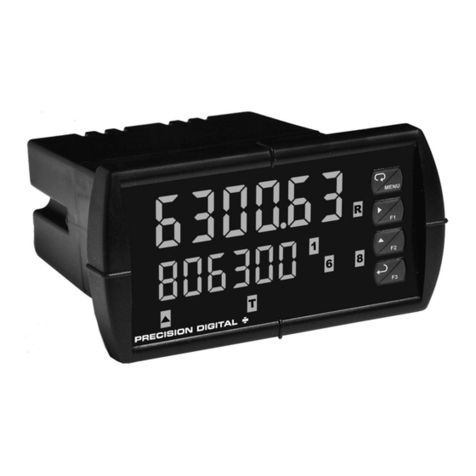
Precision Digital Corporation
Precision Digital Corporation PROVU PD6300 Series instruction manual
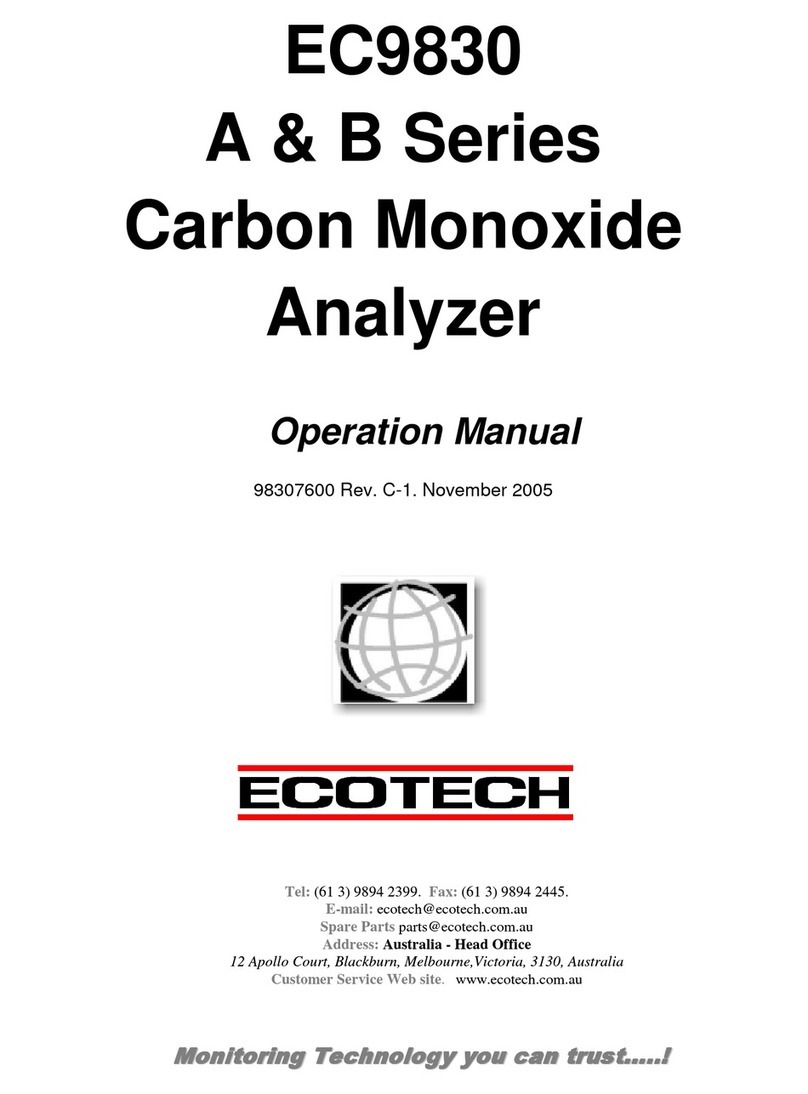
Ecotech
Ecotech A Series Operation manual
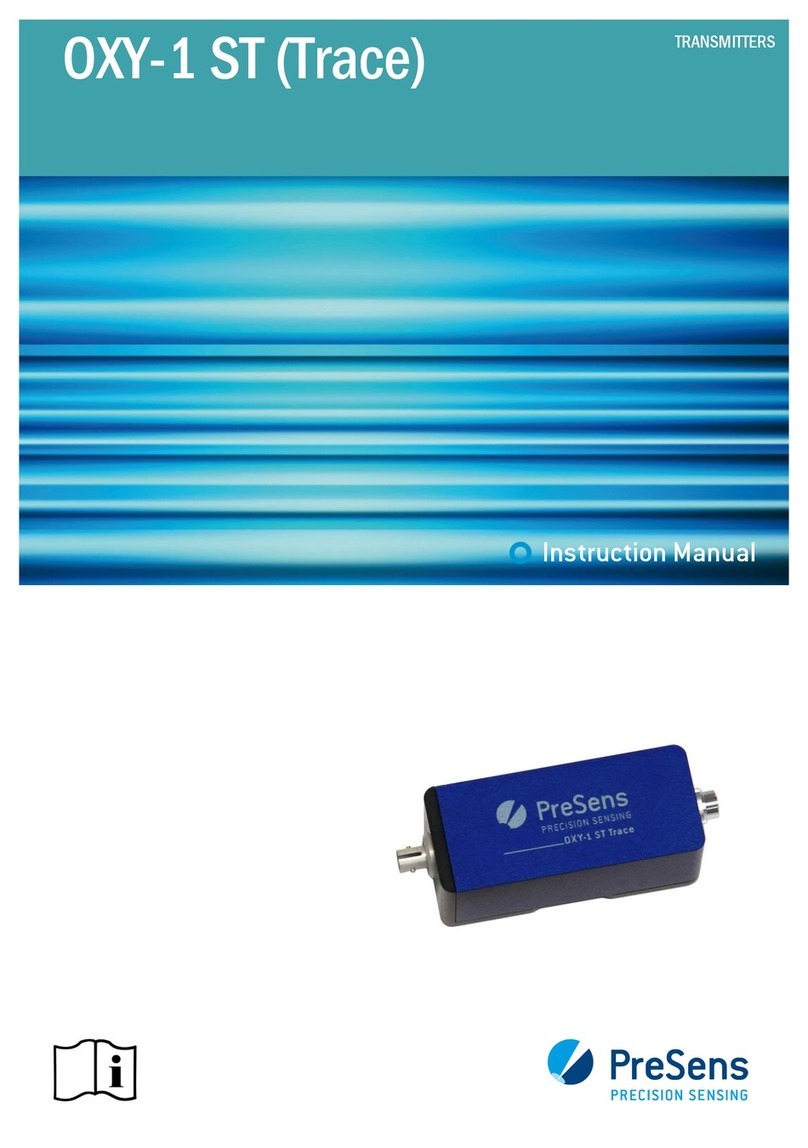
PreSens
PreSens OXY-1 ST Trace instruction manual
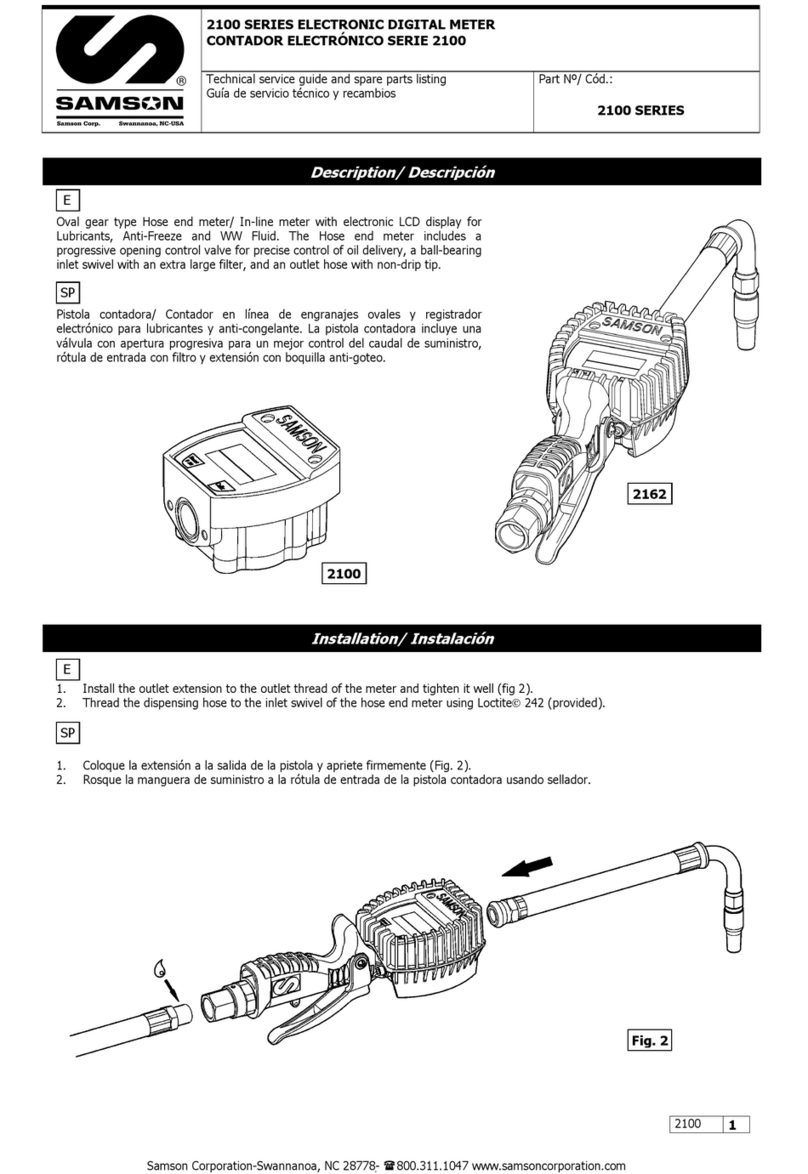
Samson
Samson 2100 Series Technical service guide and spare parts listing

cipia
cipia CIPIA-FS10 product manual




